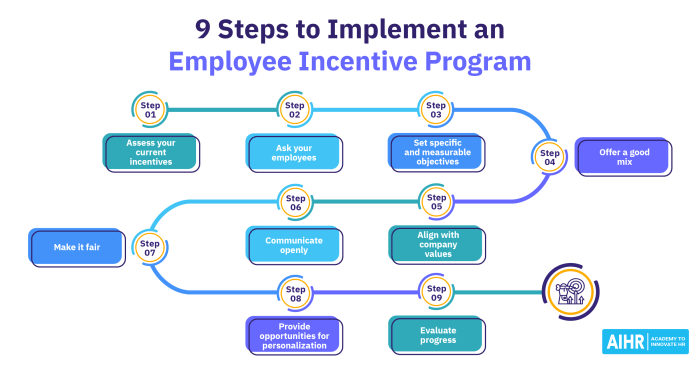As how employers communicate incentives greatly impacts employee motivation takes center stage, this opening passage beckons readers into a world crafted with authoritative knowledge, ensuring a reading experience that is both absorbing and distinctly original.
In the tapestry of organizational dynamics, incentives serve as threads that bind employee aspirations to organizational objectives. However, the manner in which these incentives are communicated can either amplify or diminish their intended motivational effects. This article delves into the intricate relationship between incentive communication and employee motivation, unraveling the nuances that shape this critical aspect of workplace dynamics.
1. Communication Channels

Employers communicate incentives through various channels, including:
- Company intranet or employee portal
- Performance management systems
- Company meetings and presentations
- Training and development programs
Effective communication methods are clear, concise, and easily accessible to all employees. Ineffective methods may be vague, confusing, or only accessible to a select group of employees.
Technology has significantly impacted incentive communication. Online platforms and mobile apps allow employers to communicate incentives in real-time and provide personalized information to employees.
2. Incentive Clarity and Transparency
Clear and transparent incentive structures are essential for employee motivation. Vague or misleading communication can lead to confusion, dissatisfaction, and decreased motivation.
Best practices for designing and communicating incentive programs include:
- Setting clear goals and expectations
- Defining the criteria for earning incentives
- Communicating incentives in a timely and consistent manner
- Providing regular feedback on employee progress
3. Employee Perception and Motivation

Employee perceptions of incentives influence their motivation. Positive perceptions lead to increased motivation, while negative perceptions can have the opposite effect.
Factors that contribute to positive perceptions include:
- Fairness and equity
- Transparency
- Alignment with employee goals and values
Employers can align incentives with employee goals and values by conducting employee surveys, holding focus groups, and involving employees in the design of incentive programs.
4. Incentive Structure and Design
Different types of incentive structures include:
- Financial incentives (e.g., bonuses, commissions)
- Non-financial incentives (e.g., recognition, awards, time off)
- Recognition-based incentives (e.g., employee of the month, public praise)
The effectiveness of an incentive design depends on factors such as the employee’s role, performance level, and organizational culture.
5. Communication Frequency and Timing: How Employers Communicate Incentives Greatly Impacts Employee Motivation

The optimal frequency and timing for communicating incentives vary depending on the organization and the specific incentive program.
Over-communication can lead to employee fatigue and decreased motivation, while under-communication can result in missed opportunities for reinforcement.
Employers should create a communication schedule that ensures timely and consistent delivery of incentive information.
6. Cultural and Organizational Factors
Organizational culture influences incentive communication. Cultures that value collaboration and teamwork may prefer non-financial incentives, while cultures that emphasize individual performance may prefer financial incentives.
Employers should adapt incentive communication to different cultural contexts by considering factors such as:
- Employee values and motivations
- Norms and expectations
- Language and communication style
Helpful Answers
How does communication frequency impact employee motivation?
The frequency of incentive communication can influence employee motivation. Over-communication can lead to information overload and decreased attention, while under-communication can leave employees feeling uninformed and undervalued. Finding the optimal communication frequency is crucial for maintaining engagement and motivation.
What role does organizational culture play in incentive communication?
Organizational culture shapes employee perceptions of incentives and their effectiveness. In cultures that value transparency and fairness, clear and transparent incentive communication is more likely to be met with positive employee reactions. Conversely, in cultures that prioritize hierarchy and authority, employees may be more responsive to incentives communicated through formal channels.